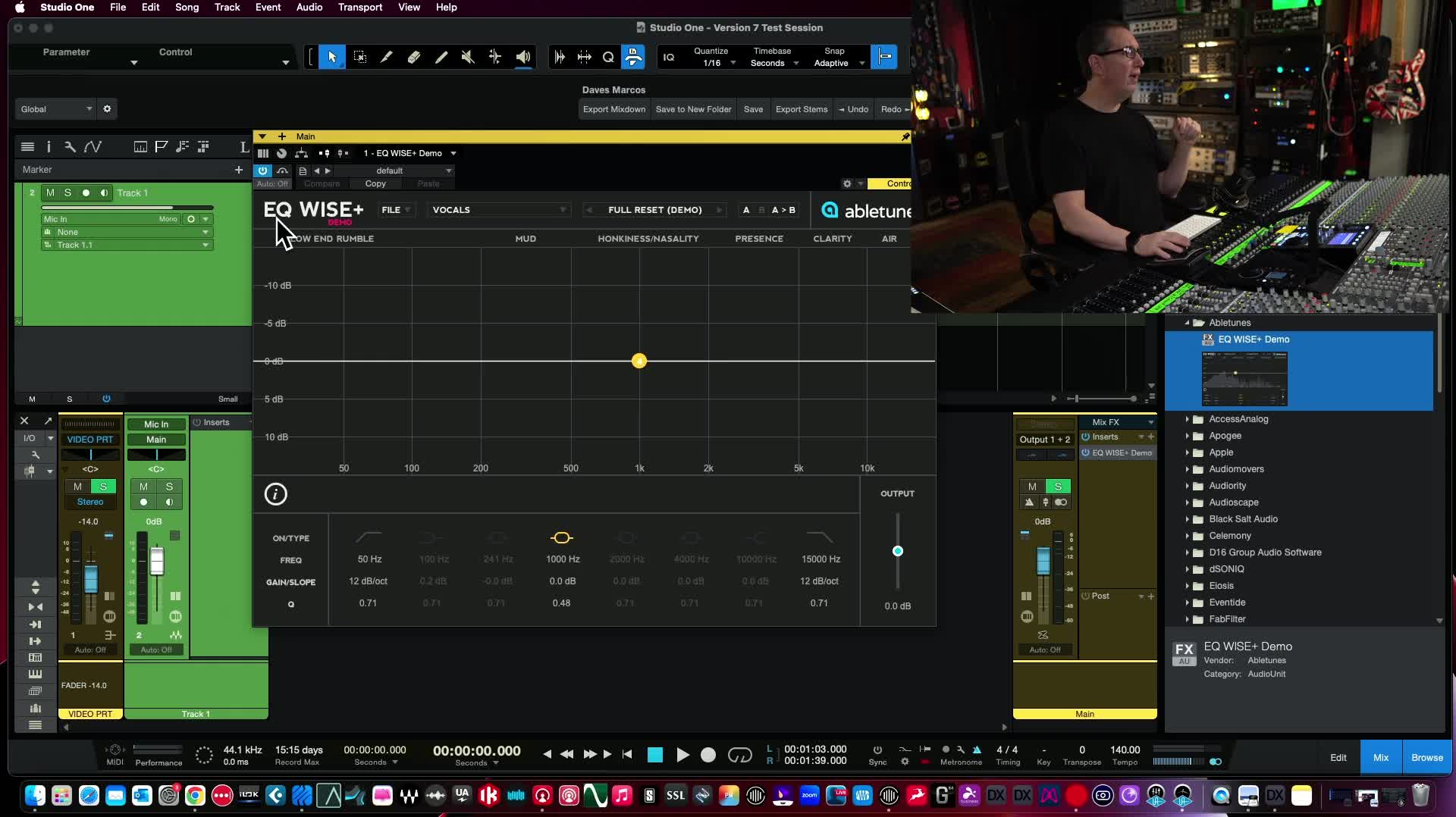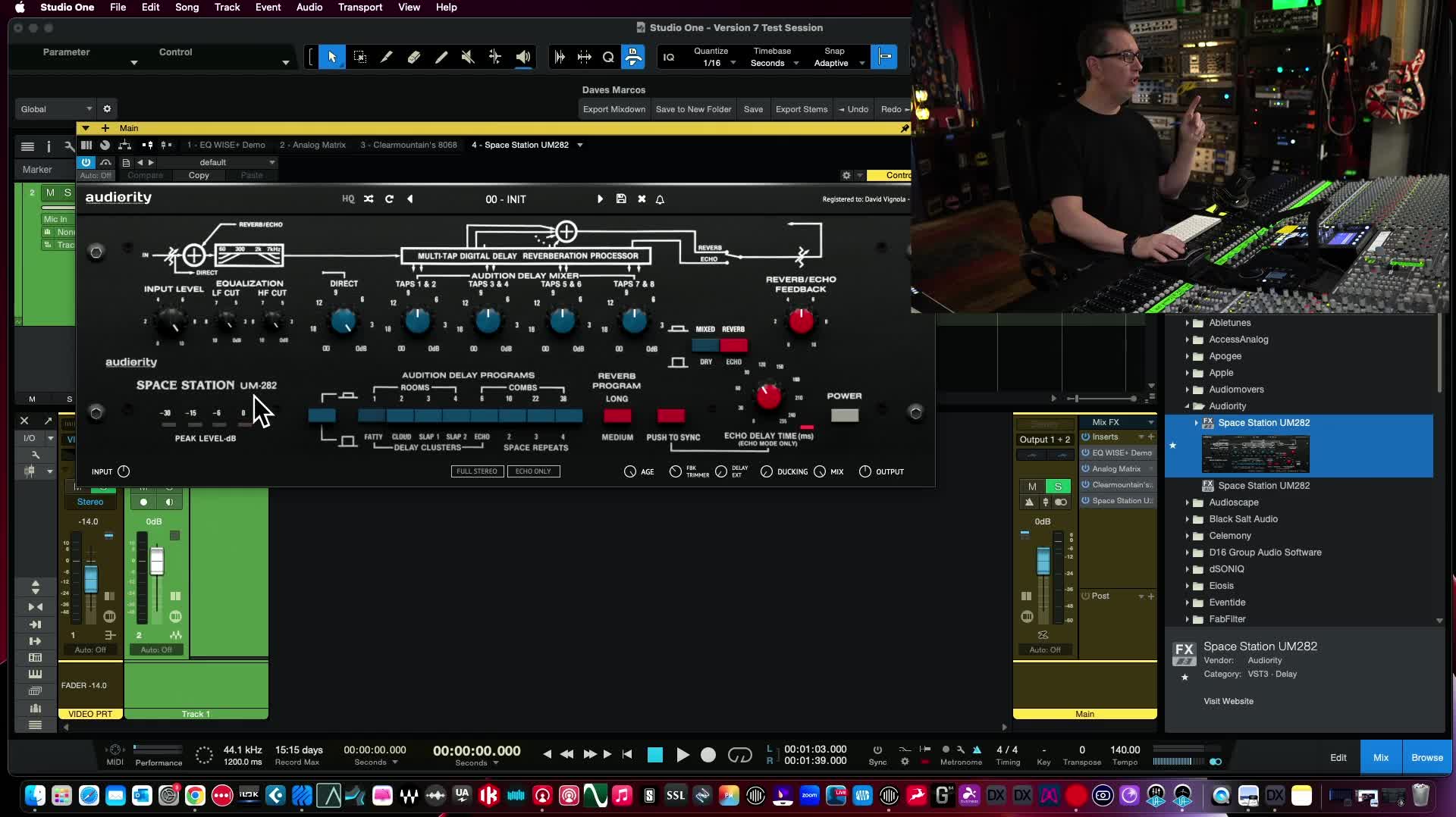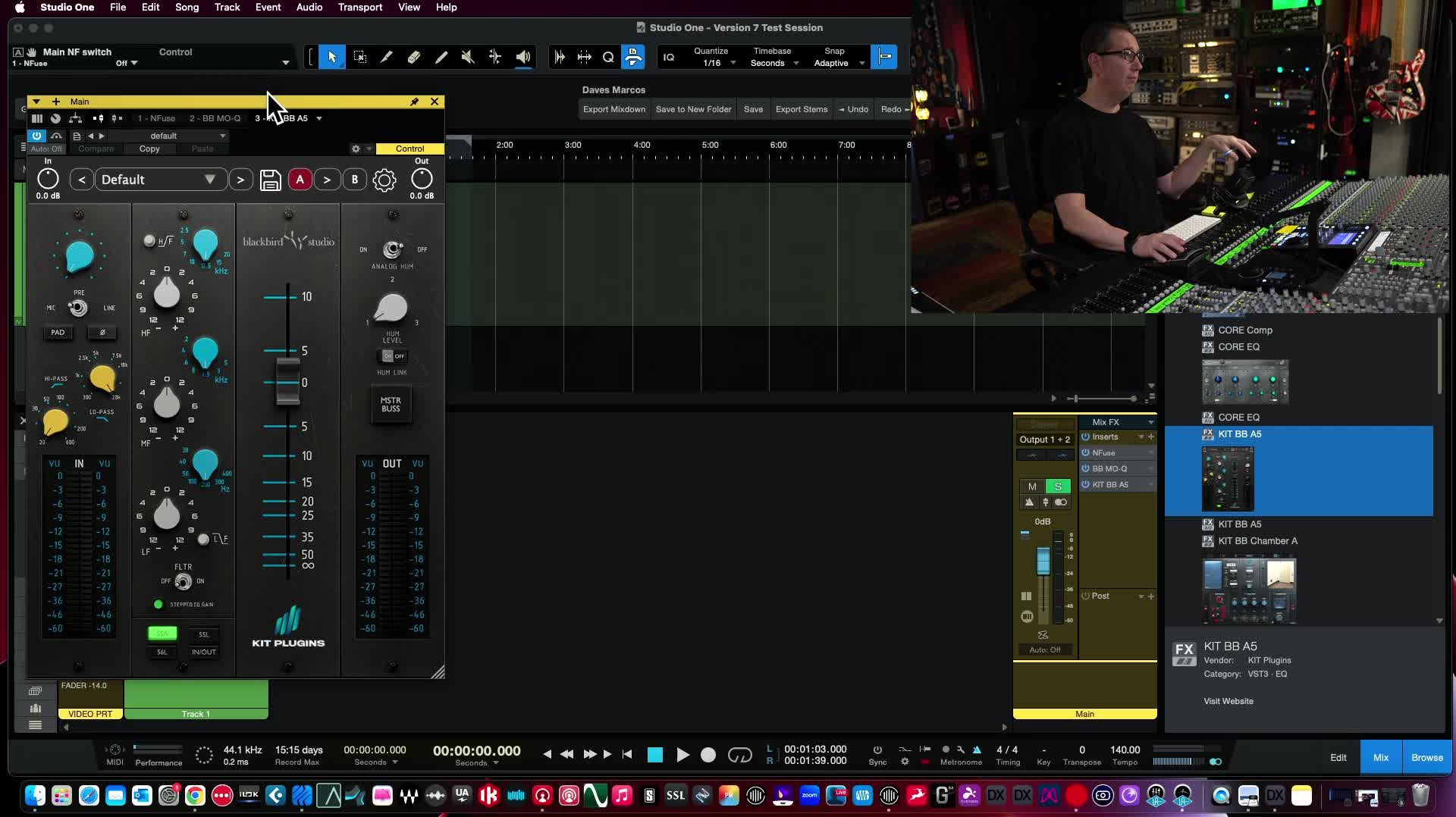What’s In My Plugin Browser? (Part 1): A Deep Dive Into My Current Plugin Collection

Hey everybody, Dave here from Home Recording Made Easy! Today, I’m coming to you with something a little bit different—and a lot of you have actually been asking for this. Over the years, while doing plugin demos, I get a ton of questions about the other plugins in my arsenal, which ones I actually use, and even which ones aren’t really pulling their weight anymore. So, I figured—why not take you right inside my plugin browser and show you exactly what I’m running on my main analog/hybrid rig?
In this post (which is Part 1 of the series), I’m giving you the full tour: what plugins I have, why I got them, which were freebies, which I actually bought, what I recommend, and which ones are getting the boot! Whether you’re a plugin junkie, a home studio runner, or you’re just looking to clean house and upgrade your sound, you’ll find tons of useful info here. And don’t worry—I’m keeping it casual and honest, just like my videos.
Let’s jump into it!
Table of Contents
Introduction: Why Show My Plugin Browser?
So why even make a video (or write a big post) about scrolling through a plugin browser? Well, if you’re anything like me or the folks who follow Home Recording Made Easy, you know that mixing and mastering is half about workflow and half about finding tools you actually love. With plugins coming out every week, it’s easy to get overwhelmed, or worse, to spend money on stuff that just sits there.
If you’ve ever asked:
-
“What should I actually keep installed?”
-
“Which plugins really make a difference?”
-
“How do I declutter my DAW?”
-
“Are those fancy analog-modeled plugins really worth it?”
Then you’re in the right place. Stick around, and I’ll show you what’s in my stack—good, bad, and outdated.
“I wanted to show you the plugins that I have, where I got them, whether they were given to me or I did demos or whether I paid for them—and my recommendations for stuff like that.”
My Studio Setup: Analog Meets Digital
Before we get digging through plugins, here’s the quick lay of the land in my studio. I mostly work hybrid—leaning heavily into analog—but I do use plugins all the time, especially for effects, EQ, compression, and some special sauce here and there.
Here’s what I’m running for this review:
-
Main Rig: Analog/hybrid setup, front and center with my SSL desk and racks of hardware
-
Studio DAW Computer: Mac Mini M2
-
Other Computer: Mac Studio M2 (my “in the box” rig—has even more plugins, might do another post about that one!)
Side note: If you like these behind-the-scenes tours, drop me a comment! If there’s enough interest, I’ll walk through my in-the-box plugin arsenal too.
Plugin Browser Breakdown (From Top to Bottom)
For each plugin or bundle below, I’ll break down:
-
What it is / does
-
How I got it (and whether I’d buy it again)
-
My honest thoughts
-
Whether it’s a keeper or on the chopping block
Let’s start at the top!
Able Tunes EQYS
What is it?EQYS (by Able Tunes) is basically an EQ training tool, showing you “cheat sheets” for where different frequency ranges live for all kinds of instruments (general, snare, vocals, etc).
Standout Features:
-
Hover to see frequency bands labeled (rumble, mud, presence, air, etc)
-
Visual tool-tips explaining how frequency areas affect the sound
-
Preset charts tailored for different instruments—super beginner-friendly
Use Case:Great for beginners learning how to EQ different sources. Nice as a reference, or if you teach mixing (like I do), but not something I use for projects.
My Take:
Useful for “junior engineers,” but I’ve outgrown it.
Keeper or Delete?
DELETE.
“It’s a good training aid for people using EQ… but I’m probably going to delete this off my system. I don’t use this.”
Where to check it out: EQYS by Able Tunes
Relevant Course Plug: If you’re looking to level up your EQ skills, definitely grab my course EQ Made Easy! The visual aid from EQYS is cool, but nothing beats step-by-step, real-world examples.
Access Analog
What is it?
A service that lets you run your audio through real analog gear remotely via the internet—then routes the processed audio back to your DAW with a plugin.
My Experience:
Gave it a shot, didn’t find much use for it personally. The process felt a bit cumbersome, and honestly, the results didn’t excite me.
Keeper or Delete?
DELETE.
Where to learn more: Access Analog
Apogee Neve 8068 Channel Strip
What is it?
A new channel strip plugin modeled after Bob Clearmountain’s actual Neve 8068 analog console.
Initial Impressions:
-
Came out in Summer 2025 (depending on when you’re reading this, this is hot off the press).
-
Demoed it by mixing an entire song—videos are up on my YouTube channel!
-
Incredibly faithful, full-featured Neve strip. The EQ and preamp in particular sound analog and musical.
-
Didn’t buy it yet (was using demo mode), but seriously thinking about adding it to my paid lineup.
Use Cases:
Channel strip mixing in the box, especially when chasing “that Neve sound.”
Price:
$99 at launch (not bad for Apogee and a high-end Neve emulation!)
Keeper or Delete?
KEEPING (will likely buy the full version).
Where to learn more: Apogee 8068
Audio Movers
What is it?
Plugins and tools for remote audio collaboration/sharing. Useful for sending audio between computers or to/from clients.
Do I use it?
Yes—essential utility for remote mixing/review sessions.
Keeper or Delete?
KEEPING.
Audio Authority YI Space Station 282
What is it?
Plugin recreation of a classic 1980s hardware reverb, the Space Station SST-282. This is a really fascinating piece; rare hardware, cool design, big 80s vibe.
Highlights:
-
Deep controls (reverb, delay, stereo imaging)
-
Takes some setup to master, but a couple of the factory presets are instant magic, especially on snare drums, overheads, and piano.
Use In My Workflow:
I’ll often use this in my “mostly-analog” workflow. Feels right at home on drums/piano.
Is It Worth It?
Pricey—but if you can find it on sale (hello Black Friday!), it’s a unique addition people forget about.
Keeper or Delete?
KEEPING.
“Looks a little overwhelming. It’s a little complicated. But it’s got a wonderful reverb/delay…”
AudioScape / Kive Audio Series
What is it?
This is a hardware company with a plugin collaboration—their outboard compressors and reverbs are now digitally modeled by Kive Audio. I actually have a ton of their actual hardware (love it—I own two racks full), so doing AB tests is a blast.
MK609 / 33609 Buss Compressor
-
Massive GUI (love it)
-
Sounds really close to my hardware unit
-
Instant vibe on drum and mix busses
V-Comp (Stay-Level Compressor)
-
Emulates both vintage and modern Stay-Level hardware
-
Has both flavors in one plugin
-
Smooth, squishy compression—try on bass and vocals
XL305R (Spring Reverb)
-
Not a digital reverb—this one models an actual spring tank!
-
305R is the newer version (what I have in hardware)
-
XL305 (vintage) is more colored/different flavor
Golden 58 Preamp
-
Haven’t installed this one too much as I don’t have the hardware for reference.
Are These Worth It?
Absolutely. These are some of the best out-of-the-box hardware sounds you can get without needing the real units. Plus, they don’t break the bank.
Keeper or Delete?
KEEPING.
“We’re going to do some videos where we’re going to compare the hardware to the plugins… All of them are really good.”
Black Salt Audio
Drum Bus Compressor
-
Clean, simple plugin—offers standard and parallel compression, plus a “slam” mode.
-
GUI is modern and uncluttered.
-
Would I buy it again? Probably not, but it’s nice to have when I want quick results.
Silencer (Gate)
-
Fantastic gate for drum tracks (especially snare and kick).
-
Comparably simple versus the more complex Sonic Drum Gate.
-
Only $50—crazy value.
Do I use them?
The Silencer gets more love. If you’re on the hunt for a gate, start here.
Keeper or Delete?
KEEPING.
D16 Group Repeater (via Slate Digital)
What is it?
A multi-mode delay plugin bundled with Slate Digital’s All Access Pass.
Honestly…?
I forget I even have it! But every time I revisit, the presets are deep and the sounds are solid, so I’m inspired to try them out more. Wouldn’t have bought separately, but glad it’s included.
Keeper or Delete?
KEEPING. (Let me know if you want a full rundown of all my delays/reverbs… could be a fun video/post!)
“If you guys see any plugins that you use that I’m not currently using, but they’re in my system and you like them, let me know in the comments.”
Donic Realphones
What is it?
A competitor to Slate VSX—translates mixes from headphones to “virtual rooms,” so you get reliable mixes even if you don’t have a treated studio. Tons of tweakability.
My Use:
I don’t mix with headphones much, but tried it out for review—solid, but feature overwhelm.
Keeper or Delete?
DELETE (prefer a simpler alternative, see below).
If you do mix on headphones?
Definitely worth a demo—could be a gamechanger for “bedroom” producers.
Elios De-Esser (via Slate Digital)
What is it?
Another plugin bundled in Slate’s All Access Pass. It’s your standard de-esser.
Use Level:
Does its job, but isn’t a standout for me.
Keeper or Delete?
NEUTRAL—won’t use much, but won’t bother deleting since it comes with the bundle.
Eventide H3000 Ultra Harmonizer
What is it?
A digital recreation of Eventide’s legendary 1980s/1990s multi-effects unit. Known for insane pitch-shifting, doubling, weird modulation/panning FX. Used on hit records everywhere.
How I Use It:
Sometimes for vocal thickening, chorusing, or unique delays—especially if I want some authentic 80s flavor.
Is It Worth The Spend?
A little pricey, but grabs are available during sales.
Keeper or Delete?
KEEPING.
“H3000… a cool utility plugin. I’m going to keep it. I’m not going to get rid of it for sure.”
FabFilter Essentials
What is it?
Mix and mastering royalty. I’ve got several, but focus almost entirely on:
-
Pro-DS (De-Esser)—one of my all-time faves
-
Pro-Q4 (EQ)—goto in-the-box EQ
-
Pro-R2 (Reverb)—surprisingly lush and flexible
How Often Do I Use These?
When I need a clean, surgical EQ or de-esser, these are first picks. Worth every penny.
Not Using:
Their compressors and multiband—I own them but never click them open.
Keeper or Delete?
KEEPING those three, but might ditch unused ones in the future.
Harrison Audio (via SSL Complete)
What is it?
Known for vintage console emulations. The “H32” (Harrison 32 channel strip) comes bundled in SSL Complete.
My Thoughts:
Honestly, they just don’t inspire me. Sound is okay, but doesn’t stand out or make me want to reach for it.
Keeper or Delete?
DELETE. Off they go!
“I don’t like the Harrison plugins. I think they’re kind of… I just don’t like them.”
IK Multimedia
What is it?
Big collection of plugins—console models, vocal strips, reverbs, tape machines, etc.
Favorites:
-
Fame Studio Reverb: Vibe-heavy classic reverb, especially great on vocals and rooms.
-
Sunset Sound Reverb: Very usable—authentic studio spaces modeled.
Others:
-
Joe Chiccarelli Vocal Strip: Nice, but not a standout—kept for tutorials.
-
Tascam Porta Tape Machines: Fun for lofi, but not essential for my workflow.
What’s Going?
-
Master Match / TX6: Never really used.
-
Tascam Tape: Not my thing.
Keeper or Delete?
-
Fame Studio & Sunset Sounds: KEEPING
-
TX6/Master Match, Tascam Porta: DELETING
iZotope Ozone & RX
What is it?
-
Ozone 10: All-in-one mastering suite—EQ, limiter, maximizer, stereoizer, you name it.
-
RX 11: Industry standard for audio repair/noise reduction.
How often do I use?
All. The. Time. Could not finish tracks for clients without these!
Keeper or Delete?
KEEPING for life.
“Use them for mastering. Use them for audio repair. Highly recommend the iZotope stuff.”
Kive Audio INF-Fuse
What is it?
Channel strip/master bus plugin—emulation of classic transformers, saturators, EQ, and more. Lets you build your own signal chain by swapping in SSL/Neeve-inspired modules.
Is it any good?
Absolutely—sounds killer, fun to use, and lets you mix/match colors.
Keeper or Delete?
KEEPING.
Kit Plugins
Here’s where I get really excited—Kit’s Blackbird line is right up my alley.
BBM-OQ (EQ), BB A5 (API Channel Strip), Fairchild F66, and More
What I love:
-
BBM-OQ: Flexible EQ—musical, great for shaping mids/top end.
-
BB A5: API channel strip emulation—one of my go-tos! If you love punchy American console sound, don’t sleep on this.
-
Fairchild F66: Mix glue for days—bus compression that just sounds “finished.”
What I skip/delete:
-
Core Comp/Core EQ: Nothing special here—stock plugins could do the same.
-
Neve 254 Series: Tried it, doesn’t move me
-
Blackbird Chambers: Cool for unique reverb, but I forget to use it (will keep!).
What I keep:
-
All the Blackbird/BB series, BB73 (1073-style preamp), and BBN105 (Neve console)
-
API A5 channel strip and F66 Fairchild compressor
What’s going:
-
Core series and Neve 254 stuff
“Channel strip mixing is my thing. I’ve done videos on this. Great plugin. Highly recommend this one.”
Lewit Space Replicator (Headphone Plugin)
What is it?
Simplified room emulation plugin for mixing on headphones—lets you “sit” in well-known studios or spaces virtually.
Why Keep it?
Way simpler than the feature-heavy Donic Realphones. Has all the essential “spaces,” not overwhelming.
If you mix on headphones:
This is my recommended choice for a fuss-free, reliable room emulation.
Upcoming Plugin Browser Reviews (What’s Left?)
Whew, that’s just the first chunk of my plugin browser! After cleaning house, here’s what I still haven’t shown:
-
Liquid Sonics
-
Noise Works
-
Overloud
-
Slate Digital (a deep-dive on their suite)
-
SSL (Solid State Logic plugin lines)
-
Sound Toys (the classics!)
-
Toontrack
-
Universal Audio
-
Waves
So: If you have favorites in those lines, or burning questions, drop a comment! Part 2 (and beyond) are coming soon, and I want to make sure I cover what YOU care about.
Final Thoughts & Your Discount Code!
So that’s a look at what’s running on my main analog/hybrid studio setup right now:
-
Tons of classic emulations alongside some handy utilities
-
A few you might not expect (or might have forgotten existed!)
-
Honest keep/delete decisions (cut the dead weight, keep the sound shapers!)
Want to up your mixing skills for FREE?
Head over to Home Recording Made Easy and grab my 100% free mixing course (a $100 value!). You’ll see the banner right on the homepage—grab it while it’s available.
Looking for more full-length courses & plugin demos?
Stick around for more posts and videos on ALL the major plugin manufacturers—tons of honest reviews and real-world sound tests!
“If you take that course and you like that course and you want to purchase one of my other training courses on the website, I want to give you a 25% discount. Coupon code is YOUTUBE25. Pop that in at checkout and you’ll save 25% on any course on the site.”
Until next time, this has been Dave at Home Recording Made Easy. Thanks for reading (and watching)! Tell me YOUR favorite—and least favorite—plugins in the comments, and I’ll see you in Part 2 of the Plugin Browser showcase!
Frequently Asked Questions (FAQs)
Q: Do you really use all these plugins in every mix?
A: Nope, not at all! Most mixes only see 10-15 plugins, tops (and a lot of that is just channel strips and a couple of reverbs/comps). The rest are for experiments, specialty cases, or reviews.
Q: Why do you keep some plugins you don’t use?
A: Sometimes it’s for teaching/demoing (for the YouTube channel or my courses), or occasionally for client sessions—they’ll ask for something specific.
Q: What’s the best place to buy these plugins?
A: Always, always wait for sales! Black Friday, end-of-year, and some spring/summer sales are great times. Most companies offer something for 50% off at least once a year.
Q: How do you avoid “plugin paralysis?”
A: I set up a “Favorites” folder inside my DAW—and only use that list most of the time. Everything else gets ignored or hidden. Occasional deep-dives (like this one!) help me clean house.
More Resources
Let me know: What plugin do YOU think is underrated? What should I try next? Drop your recommendations below and maybe I’ll pick them up for Part 2!
(Stay tuned for Part 2, and as always: happy mixing!)





